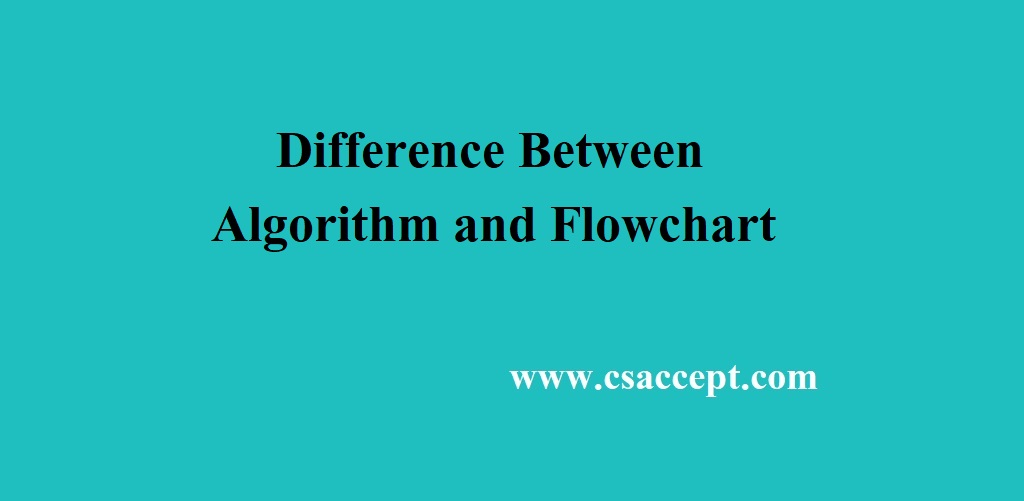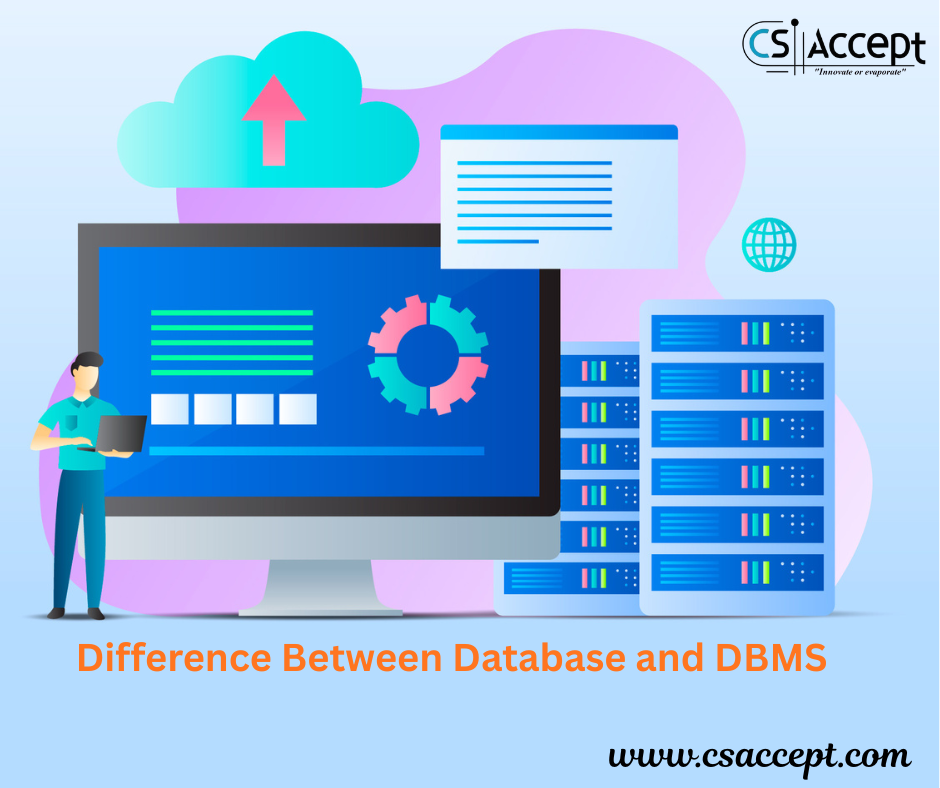
Table of Contents
- Introduction
- Definition of Algorithm
- Definition of Flowchart
- Purpose of Algorithm and Flowchart
- Characteristics
- Symbols Used (For Flowcharts)
- Components and Structure
- Types
- Advantages and Disadvantages
- Application in Real Life
- Examples of Algorithm vs Flowchart
- Comparison Table
- Detailed Differences
- When to Use Algorithm or Flowchart
- Conclusion
1. Introduction
In the field of computer science and programming, understanding the logic and structure of problem-solving is vital. Two fundamental tools used for this purpose are algorithms and flowcharts. They help developers and students visualize the logic, simplify problem-solving, and ensure accurate implementation. Although both serve the same purpose—to solve problems—they differ significantly in their representation, structure, and utility.
This document elaborates on the detailed comparison between algorithms and flowcharts, covering every aspect of their utility, application, differences, and examples. This is aimed at students, educators, and developers who want to deeply understand the theoretical and practical distinction between the two.
2. What is an Algorithm?
An algorithm is a step-by-step procedure or formula for solving a problem. It is a finite set of well-defined instructions that are followed to perform a task or solve a computational problem.
Example: To find the sum of two numbers:
- Step 1: Start
- Step 2: Input A and B
- Step 3: Sum = A + B
- Step 4: Display Sum
- Step 5: End
🔍 Key Features:
- Finite steps
- Clear and unambiguous
- Inputs and outputs are defined
- Effective and efficient
- Written in human language or pseudo-code
3. What is a Flowchart?
A flowchart is a diagrammatic representation of an algorithm. It uses symbols, arrows, and shapes to illustrate the flow of control and operations in a process.
Example: The same “Sum of Two Numbers” problem can be represented using:
- Oval for Start/End
- Parallelogram for Input / Output
- Rectangle for Process (Addition)
- Arrows to show the flow
🔍 Key Features:
- Visual representation
- Uses standard symbols
- Easy to interpret logic
- Helps in debugging and documentation
4. Purpose
Algorithm:
- To represent the logic in textual or pseudo-code format.
- Helpful for mathematical, scientific, and programming solutions.
Flowchart:
- To visualize the steps of the algorithm.
- Ideal for explaining logic to non-programmers or debugging code.
5. Characteristics
| Feature | Algorithm | Flowchart |
|---|---|---|
| Form | Textual | Visual (Graphical) |
| Language | English, Pseudo-code | Symbols and Arrows |
| Interpretation | Requires reading steps | Easier due to visualization |
| Ambiguity | Can be ambiguous | Less ambiguous due to defined symbols |
| Use | Core logic | Presentation and design |
6. Symbols Used in Flowcharts
| Symbol | Meaning |
|---|---|
| Oval | Start or End |
| Rectangle | Process or operation |
| Parallelogram | Input/Output |
| Diamond | Decision/Condition |
| Arrow | Flow of control |
| Circle | Connector (used for breaks) |
7. Structure
Algorithm:
- Structured in sequential steps.
- May use loops and conditional logic.
- Can be easily translated to code.
Flowchart:
- Nodes (symbols) connected by arrows.
- Easy branching and merging paths.
- Designed to trace flow of logic.
8. Types
Types of Algorithms:
- Brute Force Algorithm
- Divide and Conquer Algorithm
- Greedy Algorithm
- Dynamic Programming
- Backtracking Algorithm
Types of Flowcharts:
- System Flowchart
- Program Flowchart
- Process Flowchart
- Data Flowchart
- Workflow Chart
9. Advantages and Disadvantages
Algorithm:
Advantages:
- Language-independent
- Easy to modify and understand
- Logical and precise
Disadvantages:
- No visual representation
- Can be hard for beginners
- Complex logic becomes unreadable
Flowchart:
Advantages:
- Clear and understandable
- Visualizes the entire process
- Easy to debug
Disadvantages:
- Time-consuming to draw
- Hard to update for big systems
- Can become complex
10. Application in Real Life
Algorithm:
- Used in daily life decisions (e.g., cooking recipe, online search ranking)
- Used in software development, AI, ML
- Used in mathematical calculations
Flowchart:
- Used in education, documentation, process improvement
- Business workflow representation
- Used in UX design and project planning
11. Examples
Example 1: Factorial of a Number
Algorithm:
- Start
- Input N
- Set F = 1
- Repeat while N > 0
- F = F * N
- N = N – 1
- Output F
- End
Flowchart: (Would show input → loop → process → output with respective shapes)
Example 2: Checking Even or Odd
Algorithm:
- Start
- Input number
- If number % 2 == 0
- Print “Even”
Else - Print “Odd”
- Print “Even”
- End
Flowchart:
- Start → Input → Decision (Even/Odd) → Output → End
12. Comparison Table
| Criteria | Algorithm | Flowchart |
|---|---|---|
| Representation | Written (text) | Diagrammatic (shapes) |
| Understandability | Moderate | High |
| Language | Natural/Pseudo/Code | Universal Symbols |
| Flexibility | High | Low |
| Ease of Creation | Easy | Moderate to Difficult |
| Best For | Programmers and logic designers | Beginners, Managers, Non-Tech Users |
| Modifiability | Easier to modify | More time-consuming |
| Debugging | Not visual | Visual and simple |
| Tool Required | None | Diagram software or pen-paper |
| Standardization | Not fully standardized | Standard symbols exist |
13. Detailed Differences (In 20+ Points)
- Nature: Algorithm is logical; flowchart is visual.
- Design Phase: Algorithm used in early logic design; flowchart in visualization and documentation.
- Complexity: Algorithm handles complex logic better.
- Ease of Use: Flowcharts are easier for beginners.
- Communication: Flowcharts help in team communication better.
- Software Tools: Algorithms need no tools; flowcharts often need diagram tools.
- Execution: Algorithms can be close to code; flowcharts need translation.
- Feedback: Flowcharts make process review easier.
- Learning: Easier to teach programming via flowcharts.
- Standardization: Flowcharts use standardized symbols (ISO/ANSI).
- Abstraction Level: Algorithms are more abstract.
- Changes: Algorithms are easier to change dynamically.
- Presentation: Flowcharts are better for boardroom or presentation.
- Documentation: Flowcharts are preferred in technical documentation.
- Algorithm Reuse: Easier to reuse algorithm logic.
- Testing: Flowcharts help with visual test planning.
- Decision Logic: Both can handle decisions, but flowcharts make it clearer.
- Conditions: Algorithms explain conditions in detail.
- Iterative Process: Looping is easier in algorithm syntax.
- Real-time Application: Algorithms are part of software; flowcharts often used before development.
14. When to Use Algorithm or Flowchart?
| Situation | Recommended Tool |
|---|---|
| Planning the logic of a program | Algorithm |
| Presenting logic to non-technical team | Flowchart |
| Teaching programming to students | Flowchart |
| Writing pseudo-code before real code | Algorithm |
| Debugging a process or bug | Flowchart |
| Optimizing or analyzing a solution | Algorithm |
15. Conclusion
Algorithms and flowcharts are both fundamental tools in the programming and problem-solving world. While algorithms provide a detailed, step-by-step description of the logic, flowcharts help to visualize that logic in a way that is easy to understand and communicate.
Choosing between the two depends on the context:
- Use algorithms when you need to build logic precisely.
- Use flowcharts when you need to communicate that logic visually.
For professional programmers and developers, both tools are valuable. Often, they are used together — first designing an algorithm, then creating a flowchart, and finally writing the code.






